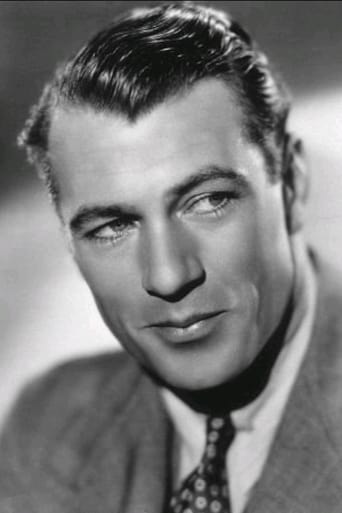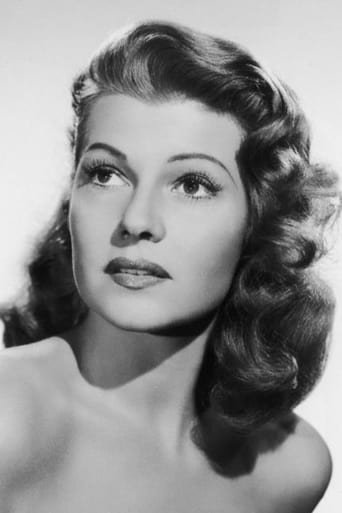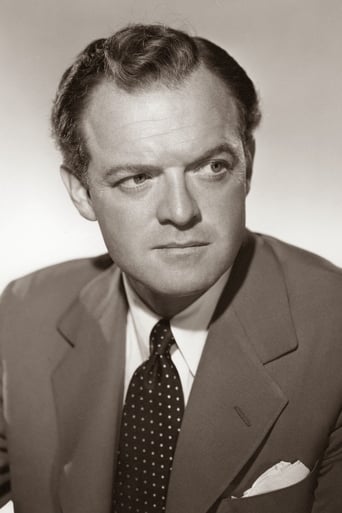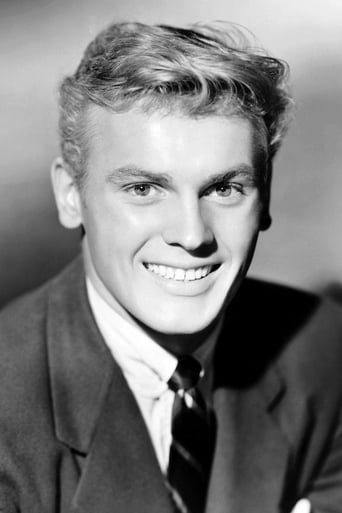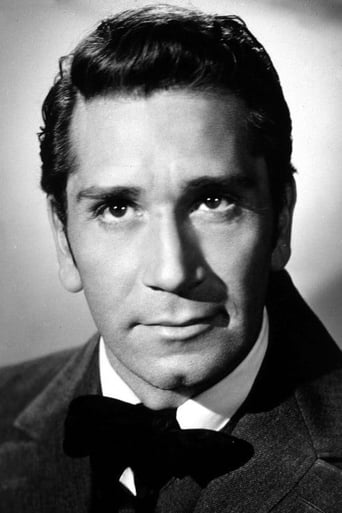Solemplex
To me, this movie is perfection.
RyothChatty
ridiculous rating
NekoHomey
Purely Joyful Movie!
Guillelmina
The film's masterful storytelling did its job. The message was clear. No need to overdo.
sammysdad97
I do not write many reviews and will only comment when something is worthy of high praise or to warn against."They Came to Cordura" is a definite "warn against" as it is a fine mess of a movie. Rita Hayworth is 15 years past her "Love Goddess" sell by date and is absolutely wasted here (and probably wishes she were.) Gary Cooper should check for termites with every line reading and is simply too old for this. The acting highlight of this movie was Sam Buffington (a favorite of mine) as a jaded war correspondent who is never seen again after about minute 5 of the film.If only I had been so lucky! There is a pretty interesting cavalry charge against a fixed position held by the banditos in the first 20 or so minutes of the film. Interesting but totally implausible as any officer who had ordered such a charge would have been sacked immediately. Still it provided the only memorable action in a movie which has little.The premise of the movie is absurd. The naivete of Gary Cooper's central character is simply unbelievable in a man of his age with 30 or so years in service. The other characters are stock types and memorable only for who they became in later TV roles (Darren Stephens of "Bewitched", the Chief in "Get Smart" to name two). The wandering in the desert to find the way to Cordura is mind numbingly boring interspersed as it is with set pieces of every man in the group turning against the Major for one reason or another.And the ending is absolutely ridiculous -- one of the worst, least plausible means to The End that has ever been "submitted for your approval" as the characters who so despised the Major enter some sort of Twilight Zone where the men they have been for 2 hours of the movie are completely transformed (by the scribblings in the Major's notebook!) so that they can drag the Major across the finish line that is Cordura.Don't let the fine cast lure you in lest you lose two hours of your life and a lot of your respect for Coop and Ms. Hayworth.
Ben Larson
The Pancho Villa Expedition—officially known in the United States as the Mexican Expedition and sometimes colloquially referred to as the Punitive Expedition—was a military operation conducted by the United States Army against the paramilitary forces of Mexican revolutionary Francisco "Pancho" Villa from 1916 to 1917 during the Mexican Revolution. The expedition was launched in retaliation for Villa's attack on the town of Columbus, New Mexico, and was the most remembered event of the Border War. The expeditions had one objective: to capture Villa dead or alive and put a stop to any future forays by his paramilitary forces on American soil.After contact with the enemy, and after losing many men, five men were nominated for the Medal of Honor. Since the army needed living heroes to prepare the nation for its likely entry into WWI, Major Thomas Thorn (Gary Cooper), an awards officer, escorts the nominees, Lt. William Fowler (Tab Hunter), Sgt. John Chawk (Van Heflin), Cpl. Milo Trubee (Richard Conte), Pvt. Andrew Hetherington (Michael Callan), and Pvt. Renziehausen (Dick York), back to headquarters. This film is the story of that journey, and Thorn's exploration of the character of heroes.Adelaide Geary (Rita Hayworth), an American woman who owns the ranch where the battle was fought, is sent back with them on charge of treason for aiding Villistas against American soldiers, even though she had no choice.Although Hayworth and Cooper both gave impressive performances, Van Heflin was the standout as a brutish sergeant, especially since he was acting against type, having played decent men forced into heroism during his best-known films, Shane (1953) and 3:10 to Yuma (1957).
Robert J. Maxwell
This is one of those perilous journey semi-Westerns. In 1916, Major Gary Cooper is the awards officer during the pursuit of Pancho Villa into Mexico. After witnessing two battles he recommends five men for the Congressional Medal of Honor -- enlisted men Michael Callan, Richard Conte, Van Heflin, and Dick York; and a lieutenant, Tab Hunter. The commanding officer, Robert Keith, tries to wheedle the same decoration out of Cooper but Cooper declines. The angry Keith orders Cooper to take his five heroes to the distant base at Cordura, and while he's at it he can take Rita Hayworth too. She's been harboring Villistas at her desert ranch.The merry group sets out on the forty-mile journey. It soon becomes apparent that the men aren't all that Cooper thought they were. They're jealous, vain, half loony, coarse, spiteful, self-pitying, and murderous. Even the other officer, Tab Hunter, sides with them. None of them wants the medal. The hatred of Cooper becomes more intense when they discover that during Villa's raid into Columbus, New Mexico, the major hid out in a ditch. Rita Hayworth, on the other hand, who starts out as a self-indulgent alcoholic, proves herself insightful, generous, and stalwart. With the other men refusing to help, Cooper drives himself to exhaustion and near death before the base at Cordura is sighted.The visuals are magnificent. The film was shot near St. George, in the red rock country near the four corners region of the Southwest. It's all piles of pink and gray sedimentary boulders with scattered juniper and pinion pine. When the detail comes upon an abandoned railway speeder, one of those contraptions on rails that must be operated by two men lifting and pushing down on handles, despite the gloomy tonus, one can hardly help but wish to join them on their journey through the Pinesol-scented air of someplace clean. Fascinating, too, to see what is essentially a Western played out in olive drab uniforms and .45 automatics and field caps that look as if they came straight out of an ancient Boy Scout manual.Alas, the effort is undercut by a banal and sometimes incomprehensible script. The dialog is sometimes stylized but it comes across not as poetic but as clumsy. Cooper mutters things like, "Got to go on. Can't give up." Not even Hemingway would have dared to suggest a man would drop those pronouns because he was too tired to pronounce them. There is some bloated talk about having acted "beyond the limits of human endurance." Nobody can do that. If you cross the limits of human endurance, then the limits were in the wrong place to begin with.The director, Robert Rossen, has done better work elsewhere -- "All the King's Men," for instance, or "The Hustler." At one point, after some of her cup of tequila has been used to tend a wounded and despised Richard Conte, the canteen cup is handed back to her, half full. She lifts it shoulder high before slowly and dramatically pouring it onto the sand. That gesture belongs in an Italian opera. And the acting varies from the very good indeed (Van Heflin, who manages to believably conquer his villainous lines) through the disappointing (Tab Hunter trying out his acting chops in the role of a heavy instead of a glamor boy), to the almost unbearable -- Rita Hayworth acts by the numbers, showing only rudimentary talent. She can't even play a convincing drunk. And when she is pushing the railway speeder, her idea of demonstrating fatigue is to drag the pointed toe of her trailing boot in the gravel. Anyone, no matter how played out, who has ever shoved a burden must wince at her ineptitude.The first half of the story is engrossing. The last half deteriorates, and at the ending the movie collapses entirely and just gives up. All along, the men have given reasons why they don't want the medals and why they resent Cooper enough to kill him. Not all the reasons for rejecting the decoration are plausible -- Richard Conte, for example, "don't hanker to be made no lead mule." But his character would have grabbed at the chance to make "an extra two bucks a month." At any rate, Cooper finally collapses while trying to haul the speeder single-handedly and the machine rolls backward, dragging Cooper face down through the gravel for fifty yards. The men now have the hated major at their disposal and Tab Hunter is about to administer the coup de gras. Before the trigger is pulled, the men read Cooper's formal description of his recommendations and undergo an epiphany. At the same time, Cordura is sighted just over the hill. Everyone climbs to his or her feet and marches off towards base accompanied by triumphant music.The moral is that no man is either entirely heroic or entirely cowardly. We all must overcome our tendency to think categorically. We're all a mixture of good impulses and bad impulses. Try to remember that, will you? Otherwise you expect too much of people, or too little of people, including yourself. I just spelled out in one paragraph what this movie takes an adventurous and beautiful hour and a half to tell us.
James Hitchcock
On March 9, 1916, the Mexican revolutionary leader Pancho Villa, angry at American support for his rival, President Venustiano Carranza, ordered more than five hundred of his men to attack the border village of Columbus, New Mexico which was garrisoned by a detachment of the U.S. 13th Cavalry Regiment. The attackers seized 100 horses and mules, burned the town, killed 14 soldiers and 10 residents, and took much ammunition and weaponry before retreating back into Mexico. President Wilson ordered a retaliatory invasion of Mexico, and General John Pershing led 10,000 men across the border in what has become known as the Mexican Punitive Expedition. The aim of the expedition, ultimately unsuccessful, was to capture Villa and bring him to justice."They Came to Cordura" is set during this now little-known episode from American history. The central character is an American officer, Major Tom Thorn, who takes part in an attack on a hacienda defended by Villa's men. Thorn has been designated his regiment's "awards officer", charged with nominating deserving soldiers for military decorations. After the enemy position has been captured, Thorn nominates five men for the Congressional Medal of Honor. This may seem a large number for what was only a minor skirmish, but the Army high command, foreseeing that America will soon be dragged into World War I, need plenty of well-publicised acts of heroism in order to stimulate recruitment. Thorn is ordered to lead these five back to the expedition's headquarters at Cordura, where they will await confirmation of their awards by Congress. He is also ordered to escort as a prisoner Adelaide Geary, the American-born owner of the hacienda, who is suspected of collaboration with the enemy.What seems a relatively simple task turns into an arduous and dangerous one. The small party come under attack from Mexican rebels, are forced to abandon their horses and run short of supplies and water. Adelaide, knowing she is likely to be put on trial for treason, attempts to escape. The greatest threats to the group, however, come from internal dissensions. Although the five men may have displayed courage during the engagement at the hacienda, none of them are otherwise particularly admirable, and they start to show their true colours during the journey. Two of them, Sergeant Chawk and Corporal Trubee, are particularly despicable individuals, Chawk having originally joined the Army to escape a murder charge. During the journey he and Trubee attempt to rape Adelaide. Moreover, Trubee has discovered that Major Thorn has a secret of his own- that he was guilty of cowardice during the raid on Columbus- and uses this to blackmail him. When Thorn's guilty secret becomes more widely known, it undermines his authority over the group.The film is essentially an examination of the question "What is courage?" (The word Cordura, significantly, is not only the name of a fictitious town, but also the Spanish for "courage"). Its central thesis is that one act of cowardice does not necessarily make a man a coward, just as one act of bravery does not necessarily make him a hero. Thorn is obsessed with proving that he is no coward and thus redeeming his lost honour, while the men under him seem equally obsessed with proving that they are no true heroes.I have never understood what "Quinlan's Film Stars" meant when it said of Rita Hayworth that "her beauty faded with the decade" (meaning the 1940s), as she still seemed very glamorous in films from the early fifties, such as "Miss Sadie Thompson" and "Salome". Here, as Adelaide, she shows that she was still strikingly attractive even at the end of that decade. Unfortunately, this is really a male-dominated film, and the presence of a woman is needed largely as a plot device, to act as the cause of dissension among the men. There is therefore relatively little for Hayworth to do, although the presence of such a glamorous major star must have helped the film at the box office.Gary Cooper, as Thorn, plays his part reasonably well, although I would agree with those who would have preferred a younger man in the role. Thorn is supposed to be a career officer who has never before seen active service; in 1916 any 58-year-old major would probably have fought in the Spanish-American War of 1898, and possibly in the Indian Wars as well. Probably the best acting performance comes from Van Heflin as the coarse, brutal Chawk.The main problem with the film lies not with the acting but with the pace. Although it is a war film about the nature of heroism there is a good deal of talk and, apart from two brief sequences, not much in the way of action. The result is a rather static, slow-moving, talky film which at times seems more like the proceedings of a debating society than an exciting war film. 5/10

